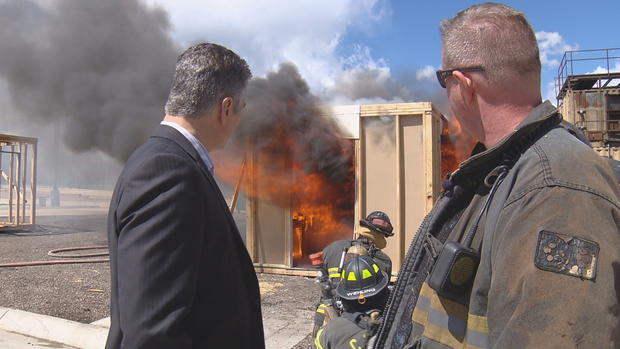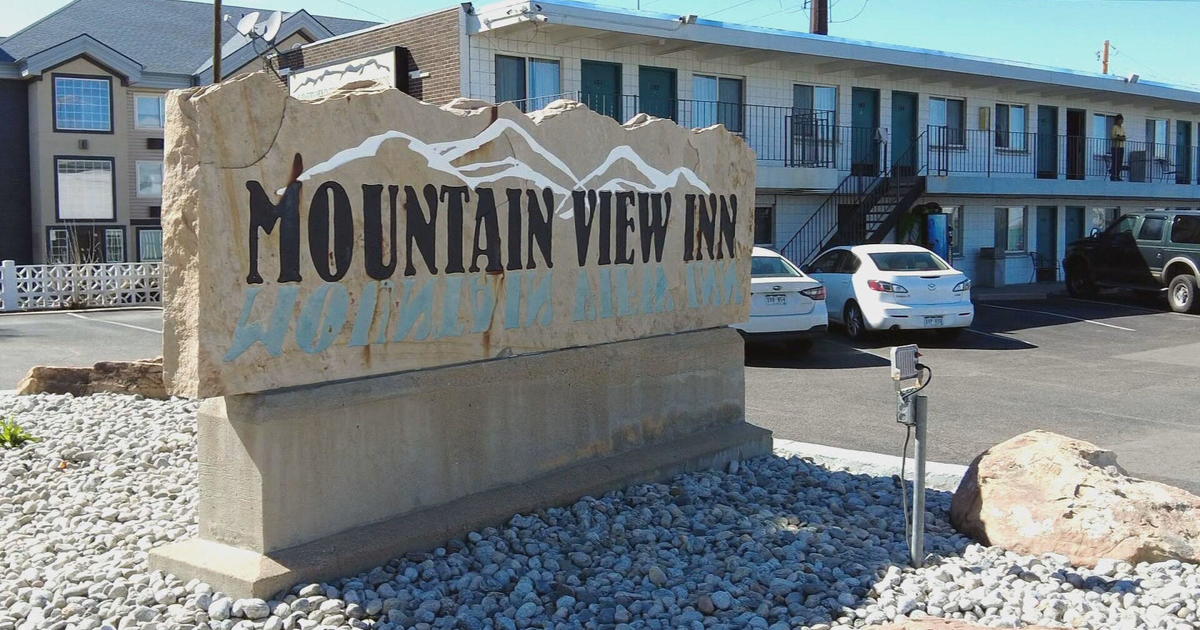West Metro Firefighters Demonstrate Why Fires Burn So Fast
By Alan Gionet
LAKEWOOD, Colo (CBS4) - Your home is most likely part of a growing problem; more dangerous fires.
"We're going into so much more dangerous conditions right now," said West Metro Fire captain Steve Hildebrandt. "We have such a limited time period in which we can get in and extinguish that fire."
The reason is probably right in front of you -- or right under you; your furniture. We set up a test with West Metro firefighters. They built two rooms and we put furniture in them.
"It shows you the difference in the construction between newer and older constructions, furnishings, what burns what doesn't burn, what smolders, what's hotter," said West Metro captain Todd Rosenberger.
It's also a danger for firefighters.
"We're going into so much more dangerous conditions right now. We have such a limited time period in which we can get in and extinguish that fire."
One of the rooms contained what's often called "legacy furniture." The idea being, show the difference in how furniture built before 1970 burns and how newer furniture burns.
"Those plastics burn much more quickly than regular natural materials," said Hildebrandt.
Firefighters set fires in the back corners of both rooms. The fire spread to the couch, curtains and table in the room with the legacy furniture fast enough to make you want to get out in a hurry. At around 4 minutes and 20 seconds the room reached a stage at which the fire was filling the room. While the fire grew quickly, it wasn't shocking.
"More natural products in there. There's wool, there's cotton, the wood is a little more stout," said Hildebrandt.
With material like that, decades ago a fire like that would have given people and firefighters critical time.
"It just doesn't have the chemical composition to release heat so immediately, so quickly."
Even with all the heat, parts of the couch did not go up.
"That entire room was fully involved like you saw, but because of the way they were built, the underside of that cushion never even caught fire," said Rosenberger.
He showed us how the dense cotton composition was flammable, but not highly flammable.
"Where the cushions were completely burned on the top side… the bottom side is completely untouched by fire."
It was a different story in the other room. Again, firefighters lit a fire in the corner. It soon caught the couch and reached for the synthetic curtains.
"The materials will definitely burn different, they burn a lot quicker and they burn a lot hotter," said Rosenberger.
He was right.
After 2 minutes, the fire was busting out of the room. At 2 minutes and 25 seconds the room was fully involved and about 1,000 degrees. The furniture after 1970 was built with many plastics and a lot of foam. The hydrocarbon-based materials are perfect fuel.
"They're terribly volatile, they burn very dirty, they burn very, very hot," said Hildebrandt. "And all that smoke is burning so fast and so hot, that it's releasing all these dark chemicals into the air."
Those chemicals are nasty, choking smoke, much worse than the woodsmoke of years past. Over the past three decades, firefighter deaths have increased – and remember, this is the era in which there are many more protections like an increased use of sprinkler systems.
"We're going into so much more dangerous conditions right now. We have such a limited time period in which we can get in and extinguish that fire," said Hildebrandt.
And it's not just furniture that's more dangerous.
Underwriters Laboratories looked at changes in both furniture and home construction. UL found fires reach flashover more than eight times faster than homes built and furnished 50 years ago.
"Somewhere in the late 1970s or early to mid-1980s was when construction materials and construction types with more open floor plans begin and then that simply fed into higher heat release rates, quicker fires," said Rosenberger.
Home builders began to use more particle board with flammable glues and trusses made with gusset plates.
"Once one fails, they all fail," said Rosenberger.
The reality is time is short.
"We get a 911 call you know, we arrive within 3 or 4 minutes, you know the fire's been burning now for at least… 5 to 10 minutes, and you can see how fast that room burned in 2-and-a-half minutes, it was fully involved," said Rosenberger.
People have to get out faster.
"Get out right away. There's just no forgiving time anymore," said Hildebrandt.
Alan Gionet is anchor of the CBS4 Morning News and reports on a wide variety of issues and "Good Question" stories. He started at CBS4 in 1994. Follow Alan on Twitter @AlanGTV.




